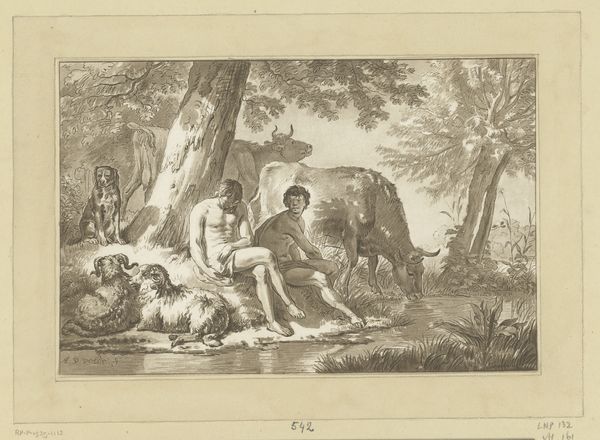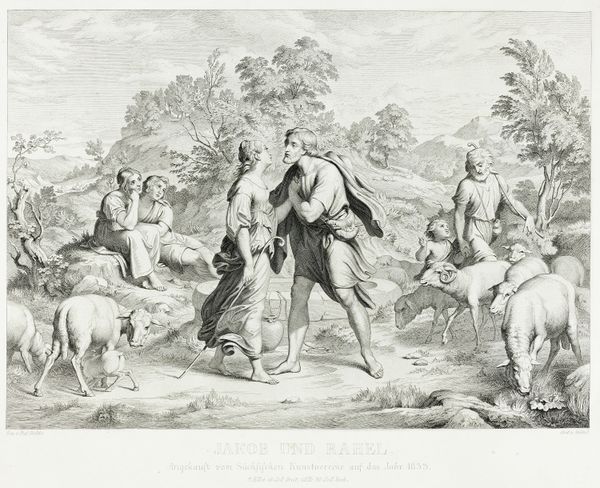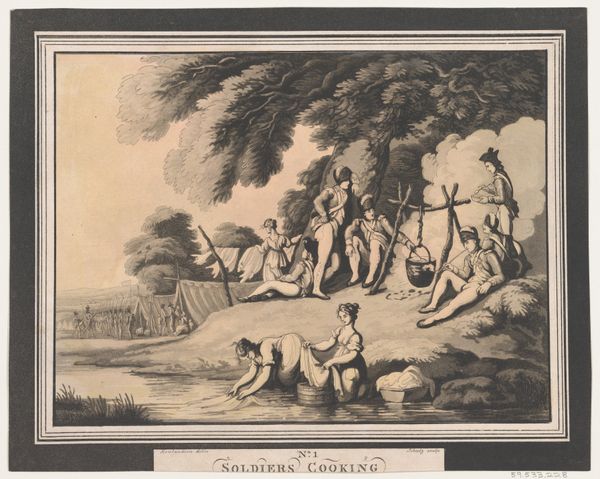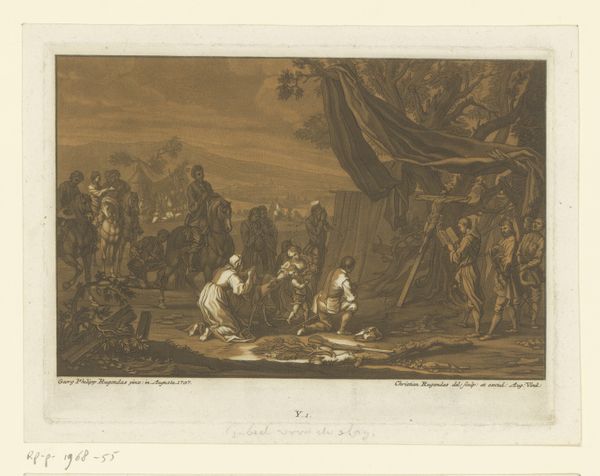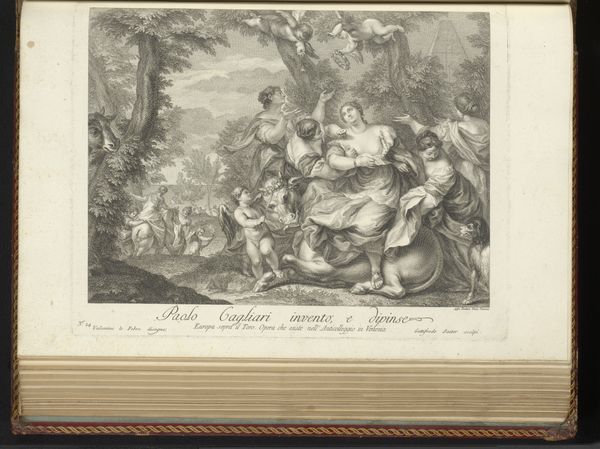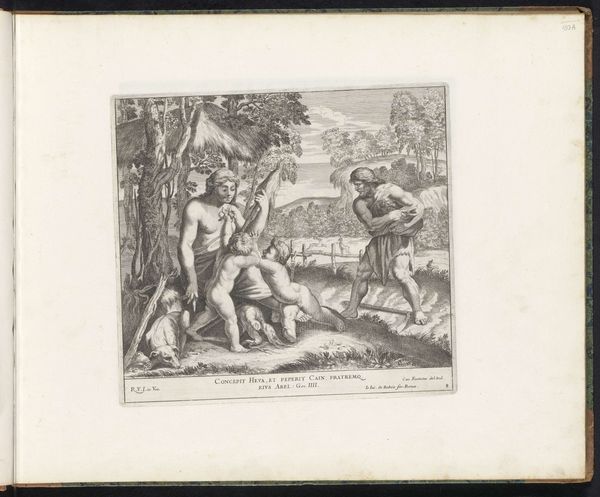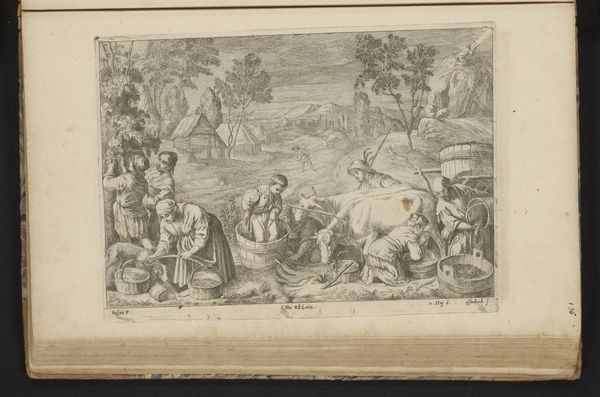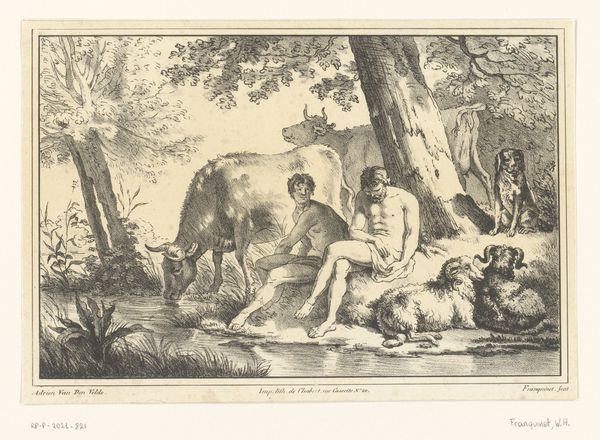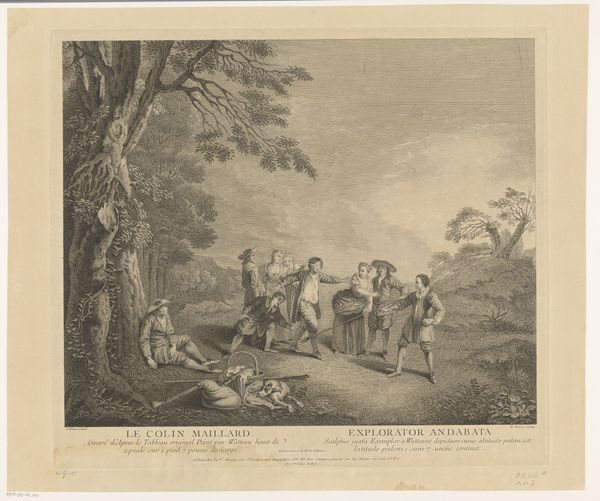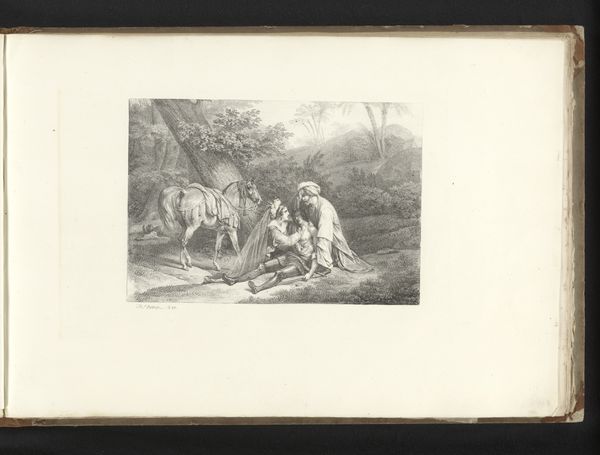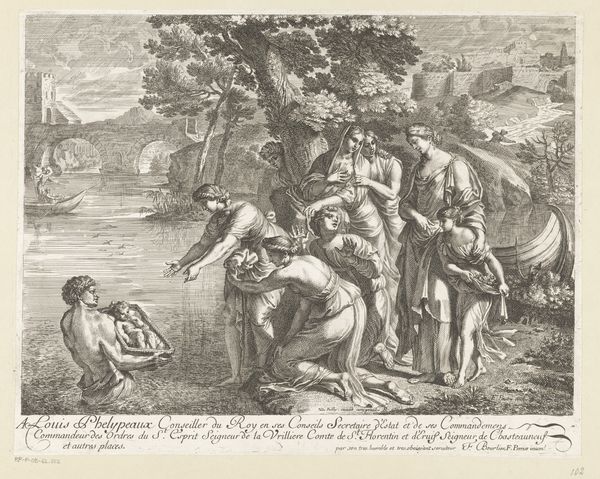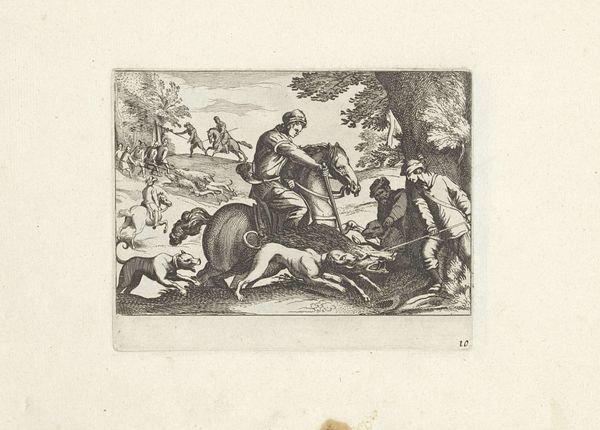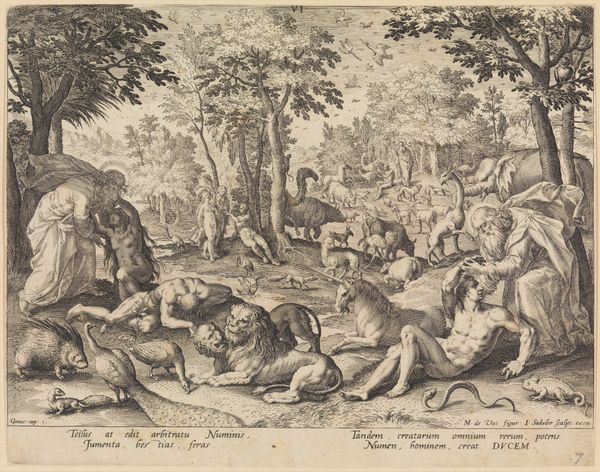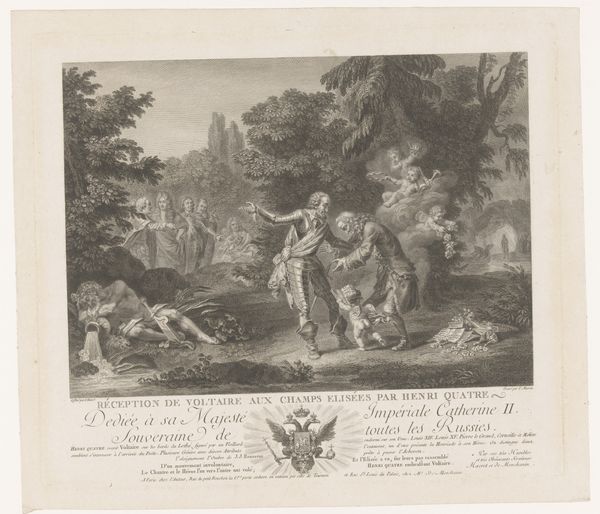
Dimensions: height 246 mm, width 401 mm
Copyright: Rijks Museum: Open Domain
Editor: Right, next up we have "Orco ontdekt Lucina en Norandino," an engraving dating back to 1772, credited to Domenico Cunego. It's a Baroque print, currently housed at the Rijksmuseum. It immediately strikes me as a little… melodramatic? A wild man and innocent shepherds... What am I missing here? How do you interpret this work? Curator: Ah, yes, Domenico Cunego! He certainly had a flair, didn't he? It's as if the artist is whispering to us, 'Don't you find life a bit of a stage, darling?'. But what stage? Let’s ponder... There's the savage brute, Ocro, quite literally 'uncovering' the young lovers. See the light, how it emphasizes their vulnerability? Then you have the innocent looking sheep. Aren’t they stand-ins for us, the viewers, caught in a rather awkward tableau? The landscape is certainly wild! Where could such wild men and innocent lambs interact if not the space of wild nature. The Baroque certainly had a thing for these contrasts of life! Does any element of the scene call to you particularly? Editor: That positioning does add another layer – as if the viewer is also complicit somehow. I do also find myself coming back to how incredibly… theatrical it all is! It feels as though a play froze right at its moment of crisis! Curator: Exactly! Frozen drama! Cunego asks if we too would intervene on behalf of Lucina and Norandino. Would we protect them, or would we too just sit and stare as they are beset by beasts? In short, do you and I also carry a share of culpability, if we choose not to act? Makes you think, doesn't it? Editor: It really does. It’s less a snapshot, and more a mirror reflecting… uncomfortable questions. Thank you! Curator: A pleasure. Always a good time peering through those Baroque looking glasses.
Comments
No comments
Be the first to comment and join the conversation on the ultimate creative platform.
